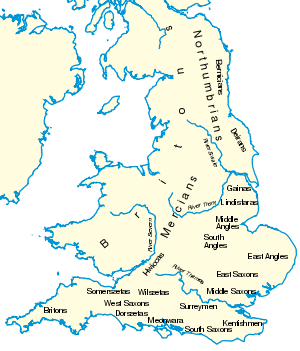There were many ways to identify the present year. Rome could use the years "since the founding of the city" (AUC, standing for ab urbe condita), or by whomever was proconsul that year. Lots of local kingdoms counted years by the reign of the king, so that each new king dated records and event starting with year "1"; even more confusing since a king could start his reign on any date of the year.
The Anglo-Saxon historian known as the Venerable Bede knew the work of Dionysius and used AD for dating in his history that went up to the year 731 (Bede died a few years later).
For years prior to AD, he use the elaborate phrase ante incarnationis dominicae tempus ("before the time of the Lord's incarnation") followed by a number. The Latin phrases used by scholars to refer to dates prior to Christ eventually came to be known in the English-speaking world simply as "BC": Before Christ.
As I mentioned in yesterday's post, they did not explain if by incarnation they meant conception or birth. In the 9th century, theologians chose conception as the starting point of the era, the date of the Annunciation, 25 March, celebrated sometimes as Lady Day.
Alcuin started using Anno Domini during the Carolingian Renascence, which helped spread the convention throughout much of Western Europe and beyond. Popes, who also used regnal years the way kings would, started using the neutral AD starting in the 11th century. When Portugal switched officially to AD for dating documents as of 1422, all Christian countries were now on board.
Note that there in no Year Zero. The first year of the present era is AD1; the year preceding is 1BC. Yes, AD is traditionally printed before the number because you are saying "The year of Our Lord 2025." Otherwise you are saying it is "Year 1 Before Christ."
Because there are other cultures with their own calendars, a modern convention has arisen of using CE and BCE (Common Era, Before Common Era) in western culture to remove the religious facet. These other calendars, still adhered to, will be a topic for tomorrow.

















